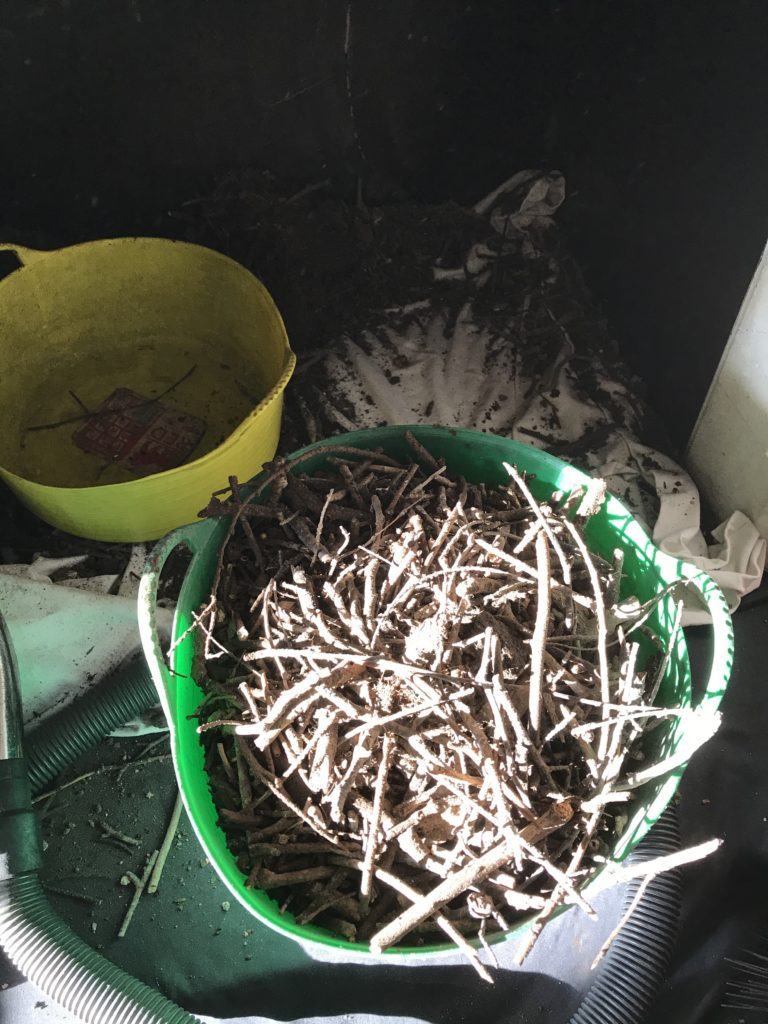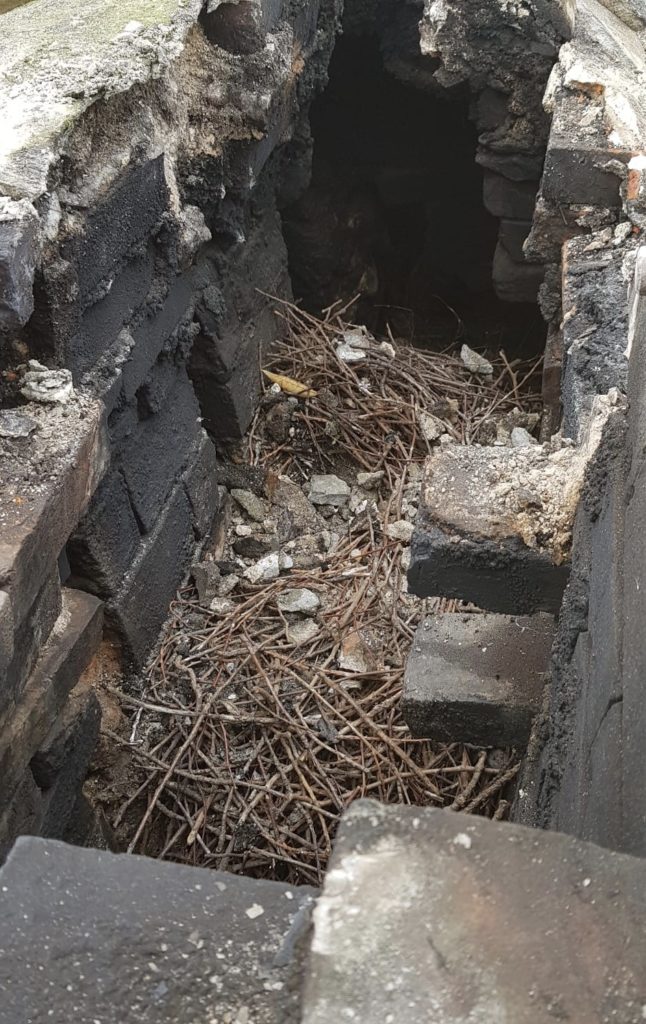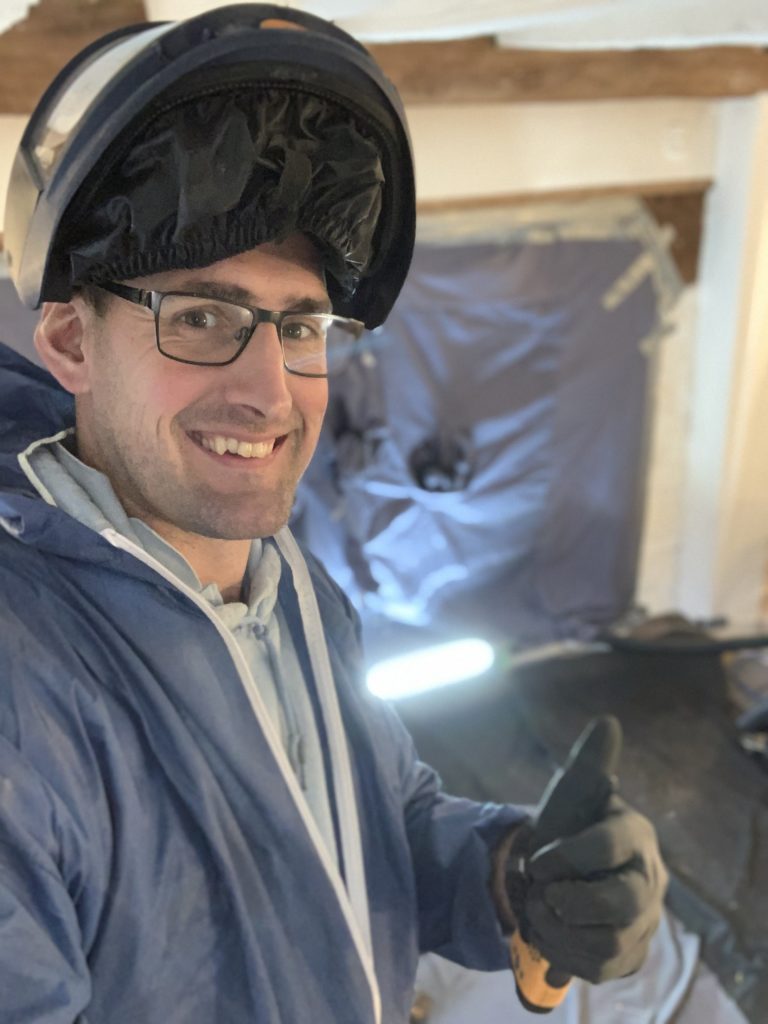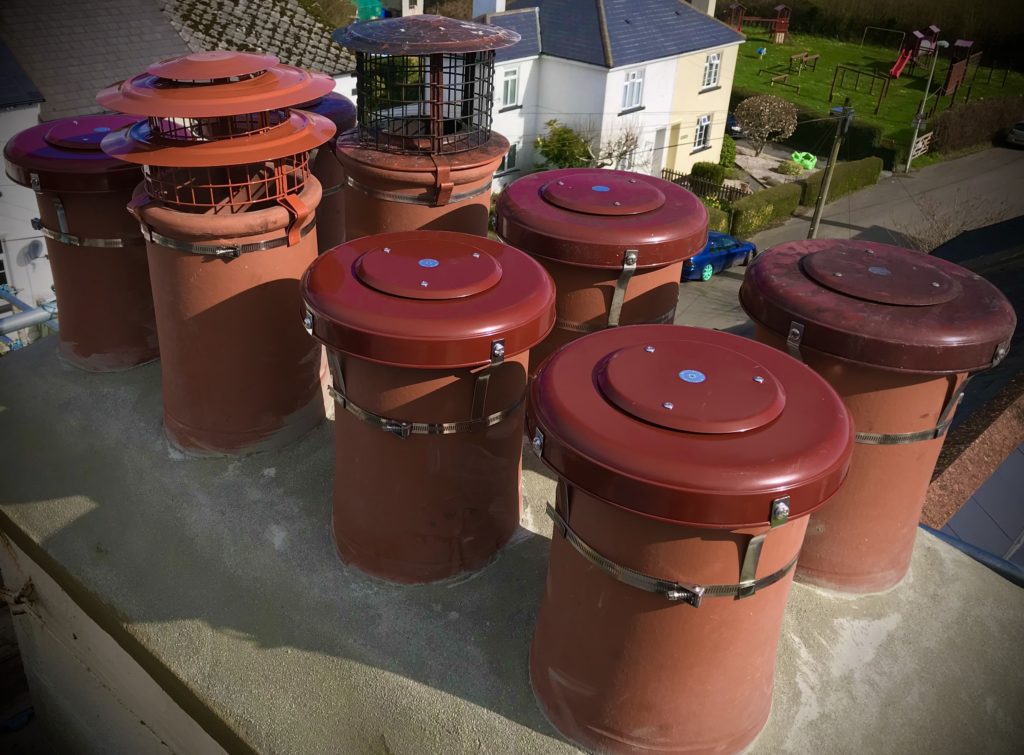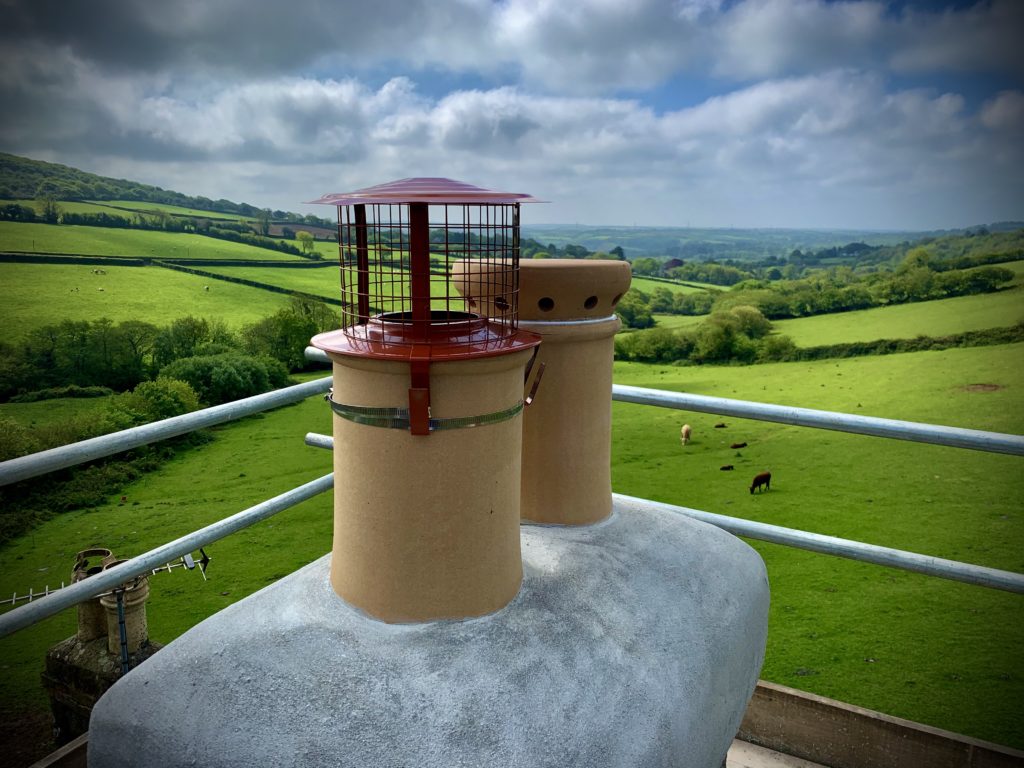The Importance of Birds’ Nest Removal From Chimneys Either In Use Or Disused
In the UK, the nesting season runs from the end of February to the start of September – the most common bird which nests in chimneys is the jackdaw. Jackdaws are monogamous, laying an average of four or five eggs which are incubated by the female. The fledglings hatch in four to five weeks, but will remain active in the nest until late August. The adult birds most often return to the same chimney year after year.
Jackdaws usually build simple nests mostly of sticks. However, through my years of experience of birds nest removal I’ve found they use all kinds of things such as mud, animal hair, string, toilet tissue, clothing – I’ve even found parts of tools! Sadly I regularly find a small number of rotting birds, but in one unfortunate case I found 26 dead birds in a single nest. It goes without saying that diseases such as psittacosis from bird carcasses and faeces are hazardous to humans and therefore the detritus needs to be removed safely.
As I’ve mentioned elsewhere (see our Birds Nest Removal Services), fires used with a nest in them could result in a serious chimney fire, or worse, carbon monoxide poisoning. Indications of a possible nest would be a fire not drawing as well as it should, smoke ‘blow-back’ and nest debris in the fireplace.
Nests in chimneys prevent vital air flow. Decomposing material will contain moisture, causing damp patches to appear. Evidence of this can be seen below – dark tea-coloured staining around the chimney breast. The only way of dealing with these unsightly damp patches is to remove the affected area, allow it to dry and then re-plaster. Letting the chimney breathe is vital – ventilation for all chimneys, used or unused is essential, helping dry out any condensation or penetrating water.
Here’s a perfect example of the wrong type of cowl being used to prevent birds getting into chimneys. Unfortunately the hood-top is not bird-proof in any way – it’s more like the perfect hotel for them as it stops some of the rain landing on their nest!

Wrong: a hood-top cowl is not bird-proof 
Below are some of the cowls we’ve fitted. There is a specific type of cowl for every circumstance. These examples show cowls that take into account different factors such as atmospheric conditions, building variations – chimney height and location etc.
We hope the information in this post has given you a better understanding of chimney maintenance, and the importance of using the correct equipment for the task of birds nest removal. We stock an extensive range of cowls and are happy to advise you on your particular requirements.


